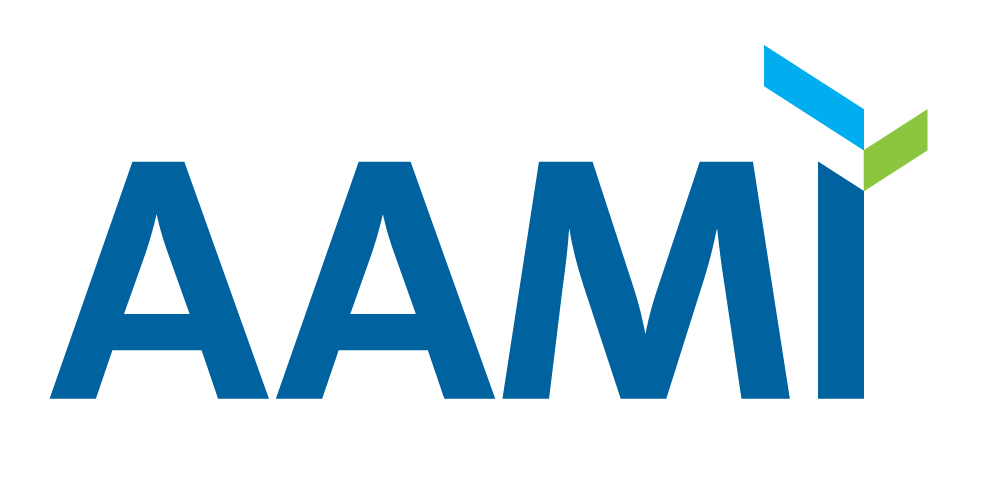AAMI Standards Program National Procedures Manual
Program scope and objective
1.1 Program scope
The Association for the Advancement of Medical Instrumentation (AAMI) is recognized as one of the foremost voluntary standards-setting organizations in the United States. The AAMI standards program is accredited by the American National Standards Institute (ANSI), the organization that coordinates the development and promotion of all U.S. voluntary standards and that officially represents the United States in international standards-setting. AAMI’s accredited scope is as follows:
“Standards for health technology products, processes and associated services.”
AAMI’s standards and technical reports are developed by technical committees or working groups operating as consensus bodies with membership drawn from a variety of backgrounds— clinicians, patient advocates, academicians, engineers, medical device manufacturers, regulators, etc. Collectively, these interdisciplinary groups develop standards and other technical documents intended to advance health technology and patient safety.
AAMI administers U.S. technical advisory groups (TAGs) that participate in the development of international standards on behalf of the U.S. The international aspects of the AAMI standards program are governed by the policies and procedures of the International Organization for Standardization (ISO), the International Electrotechnical Commission (IEC), and ANSI. AAMI has developed separate manuals that sets forth policies for AAMI’s administration of U.S. TAGs. Other AAMI committees or working groups may serve as expert advisory groups and provide input to those U.S. TAGs.
Through its national and international technical committees and advisory groups, AAMI plays a significant global role in the development of standards for health technology products, processes and associated services. Procedures and polices provided in this document—the AAMI Standards Program Policies and Procedures1—refer only to the AAMI National Standards Program, unless otherwise specified.
1.2 Program objective
The AAMI standards program works to assist the healthcare community globally in the use, acceptance, and advancement of health technology.
1.3 Program benefits
AAMI standards and other technical documents reflect the combined knowledge of medical device producers, users, regulators, and specific technology experts. They are intended to be voluntary and to be applied at the discretion and judgment of the reader. Consequently, the AAMI standards program benefits industry and healthcare professions without restricting technological advancement.
1Hereafter “Policies and Procedures”.
1.4 Types of technical committee documents/publications
1.4.1 General
AAMI technical publications are classified according to their objectives or the level of consensus they reflect. The types of technical publications described below are only examples; AAMI committees may develop other types of documents in response to specific technical issues.
1.4.2 Standards
A standard may recommend to a manufacturer the information that should be included with a product, basic safety and performance criteria, and conformance measures that can be used to assess compliance. The inclusion of design specifications in a standard is permitted when circumstances warrant, but design specifications usually are avoided as they can hinder the advancement of technology.
A standard may provide clinical users with guidelines for the use, care, evaluation, or processing of health technology.
AAMI’s standards require national consensus.
1.4.3 American National Standards
An AAMI standard designated as an "American National Standard" has been developed in accordance with ANSI's requirements for consensus, due process, public review, and ANSI review.
AAMI may choose to develop consensus standards without submitting them for ANSI approval as American National Standards.
1.4.4 Technical information reports
A technical information report (TIR) is a review of technical issues relevant to a particular technology and a statement of expert opinion. A TIR may include discussion of different sides of an issue or may be issued when a committee believes that the procedures for developing a standard would unduly delay the promulgation of needed information. A TIR may serve as an interim statement by a committee working to develop standards. A TIR also may provide additional guidance to an AAMI or American National Standard or advice on how a standard might be implemented.
A TIR represents committee consensus but is not subject to public review.
1.4.5 Other technical publications
The AAMI standards program develops technical communications tailored to the specific needs of its membership and the healthcare community at large. AAMI committees are not limited to the categories of technical publications described in the foregoing paragraphs but may choose to devise innovative approaches to education and technology assessment.
1.5 Metric policy
The use of International System of Units (SI) is preferred in all AAMI consensus documents. For situations where the SI unit is not commonly used or where the SI unit is not the term of art, the
more commonly used measurement or term of art may be used. The value in SI units, however, also may be included parenthetically.
